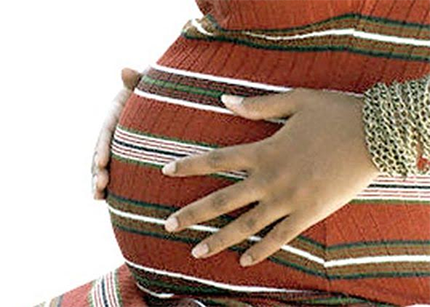
Fateful memories of the day December 3rd, 2015 do not torment the parents and friends of the late Irene Kyakunda until they realize she died as a result of an unsafe abortion at the age of 19.
Irene’s body who was just a first-year public administration student at Kampala International University at the time of her death, was discovered on Tuesday, November 1st in the swamps adjacent to Nakimese Zone in Wakiso District. Her body was tied with ropes, her dress was torn to shreds and there was blood on her legs – indicators of rape and murder. The post mortem report almost a month later, revealed that she died after procuring backstreet abortion– the second time.
Irene naive and panicking, was in a dilemma. She was torn between what best suits her and what society will think of her because anyone associated with it, is considered a social outcast. She had one option, to go underground.
This happened after she had approached a hospital to procure a safe abortion but the doctors refused citing it being restricted by law and she decided to go to a private clinic on the outskirts of the city where she was directed. As they, say the rest is history.
No best case represents the tragedy of unsafe abortions in any country that restricts abortion like this case. Many girls continue to be victims of backstreet abortions through seeking care from an unqualified provider; self-medicating; drinking toxic fluids; and self-injury.
The World Health Organization (WHO) puts it well when it establishes that unsafe abortion is among the main causes of maternal mortality and morbidity accounting for approximately 13% of maternal deaths worldwide, with the largest proportion of these deaths happening in Africa. In Uganda, unsafe abortion persists as a serious public health challenge and continues contributing towards maternal mortality.
Here is the high cost of unsafe abortions in Uganda;
It is estimated that 800 abortions are performed daily in Uganda which makes it about 300,000 abortions in a year. Those are the ones recorded. On the other hand, 1,500 women die as a result of backstreet abortion every year in Uganda. Breaking this down, those are 125 lives lost every month, about 31 every week and 14 lives lost every day. Picture this as a four seater saloon car perishing every day as we go to sleep.
65 per cent of patients on the other hand who receive care for post-abortion complications, are in the age bracket of 15-19 years just like Irene.
Where and what are we doing wrong?
Professor Mahmoud Fathallah, an Egyptian doctor and renown women’s health and rights advocate has argued that “women are not dying during pregnancy and childbirth from conditions that are untreatable, they are dying because societies have yet to make the decision that their lives are worth saving.”
Article 22 (2) of the 1995 Constitution of the Republic of Uganda is to the effect that abortion is permitted if the procedure is authorized by law. The Penal Code Act under sections 141-143 and 212-224, lays down the procedure for procuring an abortion where it states that if a doctor who thinks that an abortion is justified to save the life of the mother, must write to the director general of medical services in the health ministry, seeking approval to terminate the pregnancy. Upon receipt of the letter, the director general is supposed to convene a medical board, composed of experts, to scrutinise the case and, if satisfied, appoint a specialist to carry out the procedure.
The question remains, is this feasible in times of an emergency to procure a safe abortion in time?
On the other hand, religious beliefs amongst policy makers also plays a role in the failure to prevent unsafe abortions. The influence that Parliament yields, in terms of making favourable laws that would loosen up Article 22(1), has been reduced because many parliamentarians remain influenced by their religious and cultural beliefs when it comes to legislating on this issue.
Without access to legal abortion, women seeking to terminate a pregnancy face dire options, particularly women with limited resources. Women and adolescents with unplanned pregnancies are risking their lives and health to access what should be a routine procedure.
Laws must be enacted to change the course of these trends. Such laws ought to differentiate between safe and unsafe abortion, define who a trained health professional is, determine when, where and how safe abortion can be performed, and indicate the circumstances under which a woman qualifies for a safe abortion. These laws would give clarification to police officers and medical providers, and fill in the gap created by the law.
Tagged as
abortion IntlMHDay